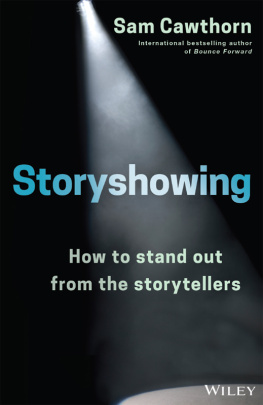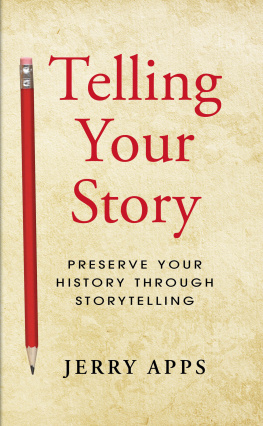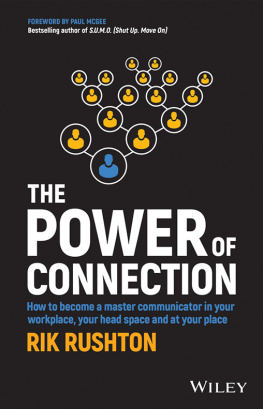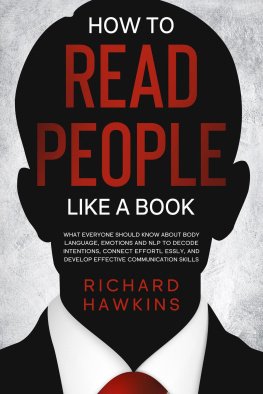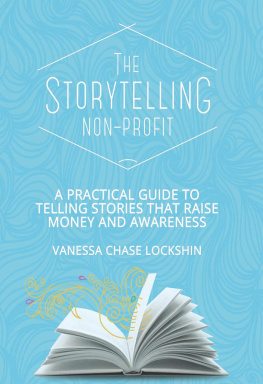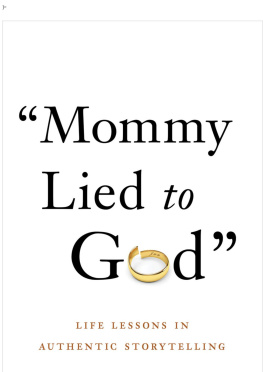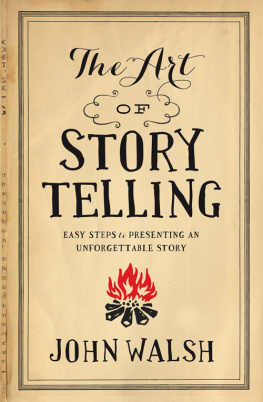
Also by Sam Cawthorn
Bounce Forward
111 Tips to Bounce Forward
The Support Person
The 4 Needs 4 Teens
The Positive Teen
The Bounce Theory
First published in 2018 by John Wiley & Sons Australia, Ltd
42 McDougall St, Milton Qld 4064
Ofce also in Melbourne
Speakers Institute Pty. Ltd. 2018
The moral rights of the author have been asserted
National Library of Australia Cataloguing-in-Publication data:
| Creator: | Cawthorn, Sam, author. |
| Title: | Storyshowing: How to stand out from the storytellers
/ Sam Cawthorn. |
| ISBN: | 9780730345886 (pbk.)
9780730345893 (custom)
9780730345909 (ebook) |
| Subjects: | Business communication.
Business presentations.
Storytelling. |
All rights reserved. Except as permitted under the Australian Copyright Act 1968 (for example, a fair dealing for the purposes of study, research, criticism or review), no part of this book may be reproduced, stored in a retrieval system, communicated or transmitted in any form or by any means without prior written permission. All inquiries should be made to the publisher at the address above.
Cover design by Wiley
Cover image Siri Stafford / Getty Images
Disclaimer
The material in this publication is of the nature of general comment only, and does not represent professional advice. It is not intended to provide specific guidance for particular circumstances and it should not be relied on as the basis for any decision to take action or not take action on any matter which it covers. Readers should obtain professional advice where appropriate, before making any such decision. To the maximum extent permitted by law, the author and publisher disclaim all responsibility and liability to any person, arising directly or indirectly from any person taking or not taking action based on the information in this publication.
About the author
Since 2006 Sam Cawthorn has been sharing his personal story around the world, reaching over 100 million people live at an event, through his books and resources, or via his social media.
Sams journey has given him a unique perspective on what works and what doesnt work in story, giving him the credibility and authority to write this book, Storyshowing.
Sam is a thought leader in peak performance and turnarounds and also a professional speaking coach. He founded and is the CEO of Speakers Institute, a company dedicated to transforming people for influence and impact.
In October 2006, Sams life changed forever when he was involved in a major car accident, where he was pronounced dead. He was thankfully resuscitated, but was left with an amputated right arm and a permanent disability in his right leg.
With a past career in the Australian government as a youth futurist, after his accident Sam did not go back to his old job. Instead, he went on to learn how to tell and show his story of miraculously overcoming a serious car accident.
Sam has written six other books, one of which became an international bestseller. He has trained over 4500 speakers around the world and has spoken in 36 countries.
Sam Cawthorn has won numerous awards, including Young Australian of the Year for Tasmania in 2009, and Edupreneur of the Year in 2015.
Sam walks his talk, and it is through his experience that his authentic message is heard.
He lives in Sydney, Australia, with his wife, Kate, and their three children, Emelia, Ebony and Jacob.
Acknowledgements
First, I would like to acknowledge Bernadette Foley for her amazing skills and talents in putting this book together. To Lucy Raymond at Wiley for championing it to its release and Sandra Balonyi for her thoughtful editing. Jodie Spiteri-James for being a great sounding board and challenging me to be a better coach.
To Drew Wade, Nick Harding, Matt Busby Andrews, Daniel Flynn, Dan Gregory, Marilyn Horowitz, Allen Palmer, Nancy Duarte, John Wood, Simon Sinek, Richard Toutounji and Stuart Zadel. And, to my love and the greatest inspiration in my life, Kate Cawthorn.
Introduction: I told you so!
A great storyteller will inspire, but inspiration will not necessarily lead to action. Thats why the time has come to stop telling your story.
Stop saying:
Listen to what Im going to tell you.
I told you so.
Now its all about showing.
Let your story show what you feel, what youve experienced and what you can offer others.
Start saying:
Hey, can I show you this?
Each of us has a unique value proposition that separates us from every other person in the world and that is our own story. No-one else has your experiences, your feelings and your beliefs. I realised this in 2006, when I first started to share my story. I came to see that my personal story has value and can inspire others. Everyone every company and organisation and even every product and idea comes with their own valuable story.
Theres nothing new about this idea. We are told that story should be the key ingredient in our communication strategy whether were in sales or marketing; whether were politicians or presenters. To inspire our listeners and potential customers to motivate them to buy or act we need to be great storytellers.
But if you truly want to persuade your audience; if you really want to inspire your team as a manager or leader; or if you want to transform the way others think about an idea, stop telling your story.
Telling comes from a place of Im not concerned with what you think or feel. Im just going to tell you what I know. To tell means to make known, to announce or proclaim, to inform or appraise, according to the Macquarie Dictionary. It is not a call to action or a compelling way to share experiences. When you tell, you expect people to listen, but what do they receive in return? Where is the connection?
I speak in front of over 40 000 people every year and reach over 100 million people annually through social media, all by sharing my story. Yet the first time I told it could have been the last.
It was my first well-paid corporate gig. Id been booked by one of the large banks to speak at their conference. I flew business class for the first time from Hobart to the Gold Coast, where I was picked up in a black stretch limo and taken to the Palazzo Versace hotel. The conference organisers were waiting to meet me when we drove up, and they escorted me into the lobby as if I were royalty.
I had prepared my message and I was ready to go. They ushered me onto the stage and I looked out at 300 to 400 people. I felt so confident that the big crowd didnt faze me. I was sure I would impress them. I told a few jokes and made them laugh. Then I reeled off some research and statistics. Even though I wasnt a researcher, I was sure this was what they wanted to hear because these people were in the corporate world and expected to be informed. I thought I was good. In fact, I thought I was a lot better than I actually was. In reality, I was an amateur speaker trying to get a message across by entertaining and educating my audience.
Next, I told them my story. I didnt pause I didnt give the audience time to breathe I didnt allow them to experience what I had experienced. Instead, I simply went through the motions of telling them what had happened to me.
A few years ago I had a car accident and I remember driving along and I fell asleep. I was told I then veered over to the wrong side of the road while I was doing 104 kilometres. My arm was ripped off
Next page
